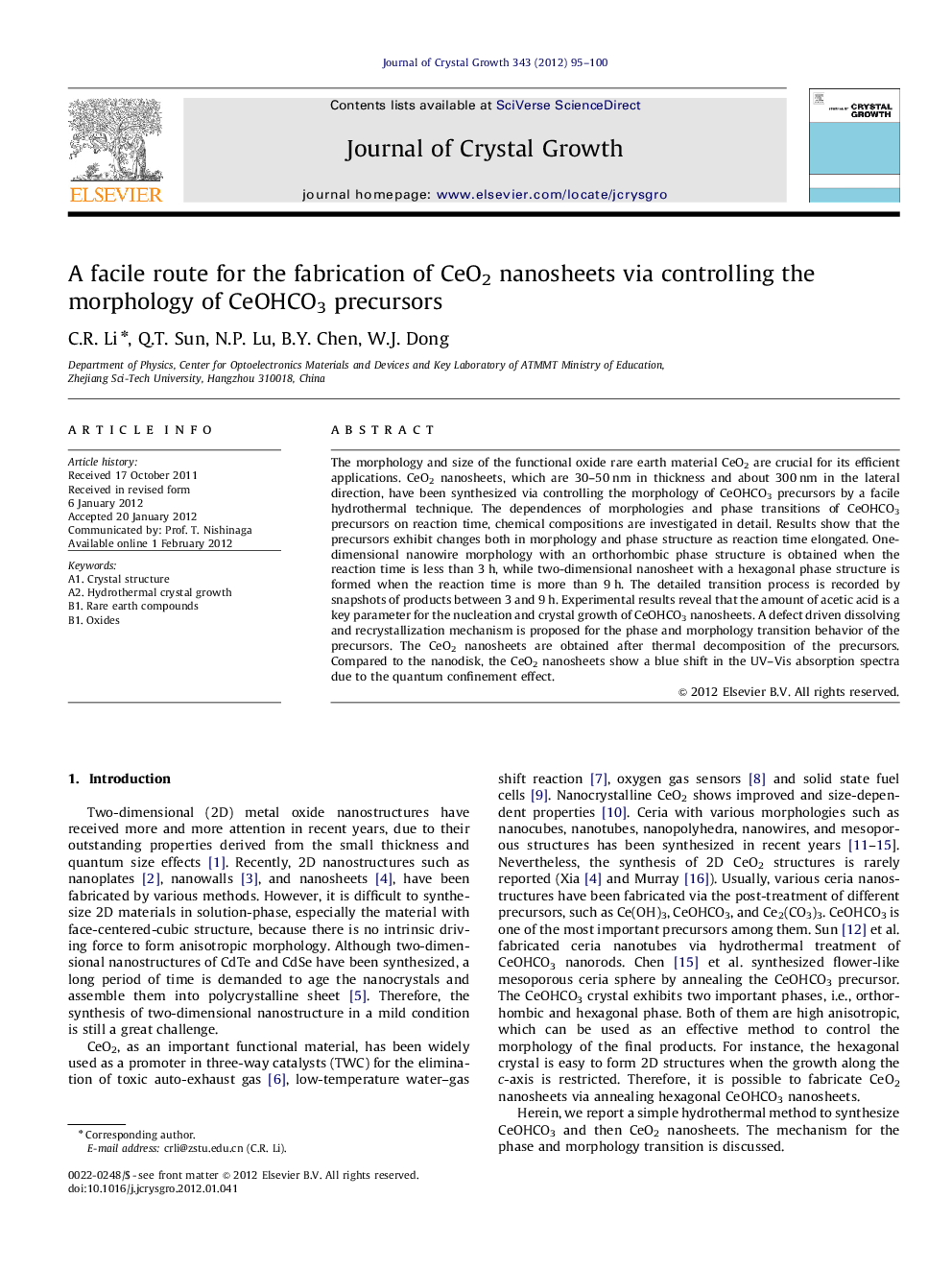| Article ID | Journal | Published Year | Pages | File Type |
|---|---|---|---|---|
| 1791988 | Journal of Crystal Growth | 2012 | 6 Pages |
The morphology and size of the functional oxide rare earth material CeO2 are crucial for its efficient applications. CeO2 nanosheets, which are 30–50 nm in thickness and about 300 nm in the lateral direction, have been synthesized via controlling the morphology of CeOHCO3 precursors by a facile hydrothermal technique. The dependences of morphologies and phase transitions of CeOHCO3 precursors on reaction time, chemical compositions are investigated in detail. Results show that the precursors exhibit changes both in morphology and phase structure as reaction time elongated. One-dimensional nanowire morphology with an orthorhombic phase structure is obtained when the reaction time is less than 3 h, while two-dimensional nanosheet with a hexagonal phase structure is formed when the reaction time is more than 9 h. The detailed transition process is recorded by snapshots of products between 3 and 9 h. Experimental results reveal that the amount of acetic acid is a key parameter for the nucleation and crystal growth of CeOHCO3 nanosheets. A defect driven dissolving and recrystallization mechanism is proposed for the phase and morphology transition behavior of the precursors. The CeO2 nanosheets are obtained after thermal decomposition of the precursors. Compared to the nanodisk, the CeO2 nanosheets show a blue shift in the UV–Vis absorption spectra due to the quantum confinement effect.
► CeO2 nanosheets are fabricated by a facile template-free hydrothermal method. ► A defect driven mechanism is proposed for the phase and morphology transition. ► The transition process of the CeOHCO3 precursors has been studied in detail. ► CeO2 nanosheets show a blue shift in the UV–Vis absorption due to the size effect.
